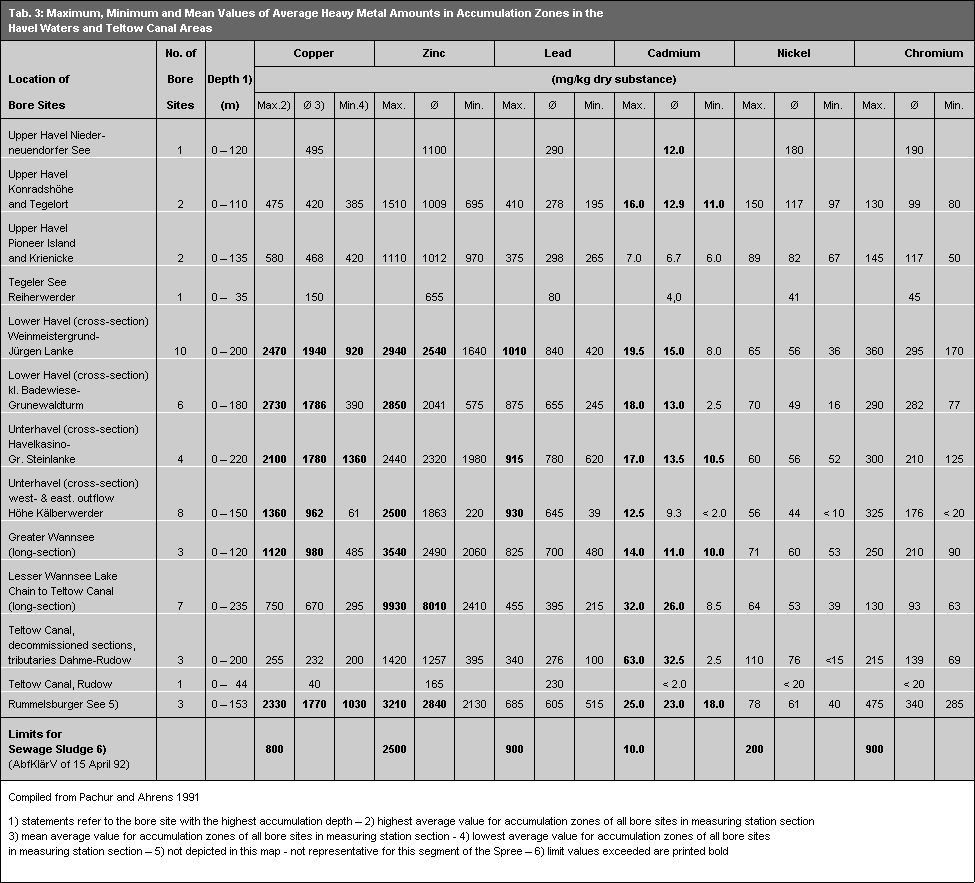Heavy Metals in Sediments
The sediments of the entire flow distance of the lower Havel, Wannsee and Lesser Wannseekette (lake chain) are primarily to be viewed as heavily impacted with heavy metals.
Almost all waters running through Berlin flow into the Havel. The extremely low flow velocity of the Havel lake-like areas facilitates the sedimentation of transported suspended and precipitate matter. Lower Havel sediments have high impact values in the quality class 3-4 and 4 for the heavy metals cadmium, zinc, lead and copper. Relatively low concentrations were detected of chromium, quality class 2 and 2-3. Nickel contents of Lower Havel sediments were insignificant, in the range of quality class 1-2.
The Lesser Wannsee lake chain shows the influence of Teltow canal water inflows. The Teltow canal has been flowing over the Prinz-Friedrich-Leopold canal since 1905. Increasing zinc concentrations since this time can be detected.
The upstream Havel shows a lower heavy metal contamination in sediments than the Lower Havel. Pollution here can be traced back to the industrial centers of Oranienburg and Hennigsdorf, located north of Berlin.
The extremely different contaminations of the Teltow canal section from the Dahme tributary to Rudow, in West Berlin, are caused by land-fill barriers in the former border area between East and West Berlin. A sedimentation of suspended and precipitate matter occurred here primarily in the eastern section. The generally high values of heavy metals here, particularly cadmium, were caused by effluents from VEB Berlin Chemie.
Measurements of Spree sediments in East Berlin show lower heavy metal impacts, in quality class 1 to 2-3. The Spree here has not yet entered the highly settled areas of Berlin, and it has a lower sedimentation rate. These factors explain the differences in quality compared to sediments of the Lower Havel.
Table 3 gives the highest, middle and lowest values of heavy metal impacts in sediment samples taken from the Havel waters and the Teltow canal by the frozen-core bore method. Extremely high heavy metal levels were determined at a few measurement bore sites, values which exceed by several times the limit values for mud of the Sewage Sludge Regulations (AbfKlärV of 15 April 1992).

